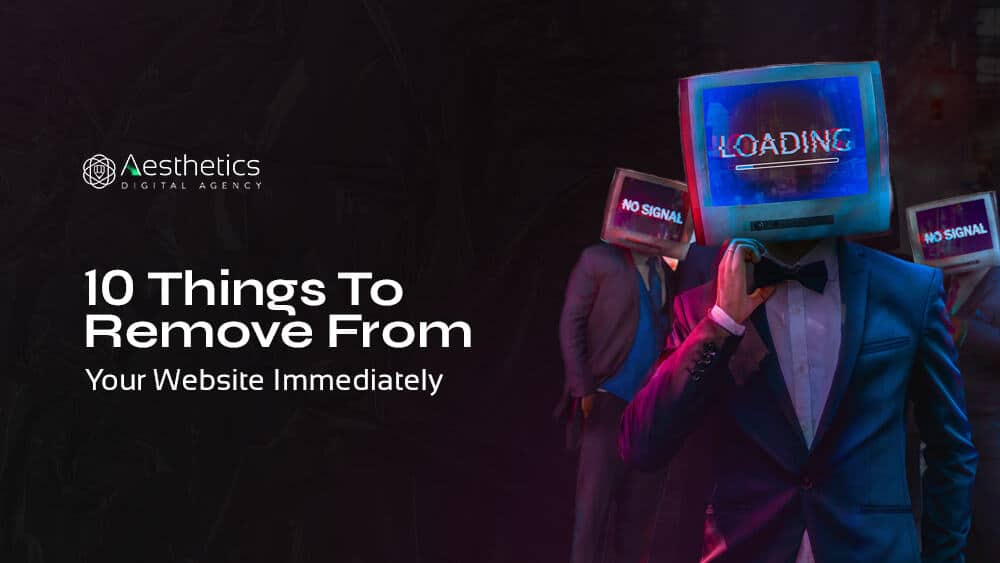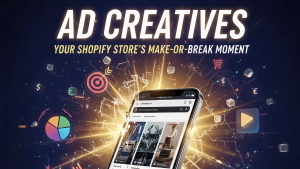Think of your website as your online store. How do you want your visitors to feel when they land on your homepage? Do you want them to be intrigued, engaged, and curious, or bored, confused, and frustrated? Your website is often the first point of contact with your potential customers, so you want to make sure it showcases your brand in the best possible way. In this article, we’ll reveal 10 Things To Remove From Your Website Immediately improve your user experience and boost your results. Not everything on your website is helping you achieve that goal. In fact, some features may be hurting your performance and driving away your visitors.
10 Things To Remove From Your Website
- Vague Homepage Headers
Homepage headers are the first thing visitors see when they land on your website, and vague statements like “We’re the best” fail to convey the unique value proposition of your brand. According to a study by Nielsen Norman Group, users form an opinion about a website in as little as 0.05 seconds, highlighting the importance of clear and concise messaging. Instead of generic claims, write headers that clearly communicate what sets your brand apart and why visitors should engage with your content.
- Generic Navigation Labels
Navigation menus are the roadmap that guides users through your website, but generic labels like “Products” or “Services” can leave visitors feeling lost and frustrated. Research indicates that 28% of site abandonment is due to poor navigation. By using descriptive and intuitive labels, you can make it easier for visitors to find what they’re looking for and reduce bounce rates, ultimately improving user satisfaction and conversions.
- Meaningless Subheads
Subheadings play a crucial role in breaking up content and guiding readers through your website, but meaningless subheads fail to provide valuable context or guidance. Eye-tracking studies have shown that users spend an average of 5.94 seconds looking at a website’s main image, emphasizing the importance of clear and engaging subheadings to capture their attention. Replace vague subheads with descriptive ones that provide insight into the content that follows, keeping visitors engaged and informed.
- Homepage Slideshows
Homepage slideshows, also known as carousels, are a common feature on many websites, but research suggests they often go unnoticed and fail to engage users effectively. A study by Notre Dame University found that only 1% of users click on homepage carousels, indicating low engagement and missed opportunities for communication. Instead of using slideshows, opt for static, attention-grabbing content that communicates your key messages immediately and captures visitors’ interest.
- Stock Photos of People
While stock photos may seem like a convenient option for adding visual appeal to your website, using generic images of people can detract from authenticity and trustworthiness. Research by Nielsen Norman Group has shown that users are more likely to ignore images that look like stock photos, opting instead for authentic visuals that resonate with their experiences. Invest in high-quality, original imagery that reflects your brand’s identity and values, building trust and credibility with your audience.
- Social Icons on Service Pages
Placing social media icons on service pages may seem like a way to encourage engagement, but it can actually distract users and lead them away from your website. Think of social icons as candy-colored exit signs, tempting visitors to leave before they’ve fully explored your offerings. Instead of cluttering service pages with social media links, strategically place them on your homepage or contact page to encourage interaction without disrupting the user journey.
- Dates on Blog Posts
Including dates on blog posts may seem like a way to showcase your content’s freshness, but it can also highlight outdated or irrelevant information.Remove dates from blog posts to ensure they remain timeless and continue to attract visitors long after their initial publication date.
- Long Paragraphs
Long paragraphs can overwhelm readers and make it difficult for them to absorb your content. According to research by Nielsen Norman Group, users only read about 20-28% of the text on a webpage, skimming for key information instead of reading every word. Break up long paragraphs into shorter, digestible chunks to improve readability and keep visitors engaged with your content.
- Press Releases
While press releases may seem like a valuable addition to your website, they often clutter up space without providing significant value to visitors. Instead of uploading press releases in their entirety, summarize important news or announcements directly on your website’s homepage or dedicated news section. This allows you to highlight key information and keep visitors informed without overwhelming them with unnecessary details.
- PDF Files
PDF files can be difficult for users to access and navigate, especially on mobile devices. According to research by Statista, In the last quarter of 2023, mobile devices (excluding tablets) generated 58.67% of global website traffic, highlighting the importance of mobile-friendly content. Convert important information from PDF files into web pages for easier access and improved user experience, ensuring that all visitors can engage with your content seamlessly.
Conclusion
What if you could turn every visitor to your website into a loyal customer? What if you could make them feel welcome, understood, and valued, and convince them that you have the perfect solution for their needs? Sounds too good to be true, right? Well, it’s not.
It’s possible with a well-designed website that reflects your brand identity and delivers a great user experience. But not every website does that. In fact, some websites are full of elements that annoy, confuse, or bore visitors, and make them leave without taking any action. The above-mentioned 10 things to remove from your website are hurting your online presence, so update them to create a more engaging, effective, and user-friendly website that converts.







